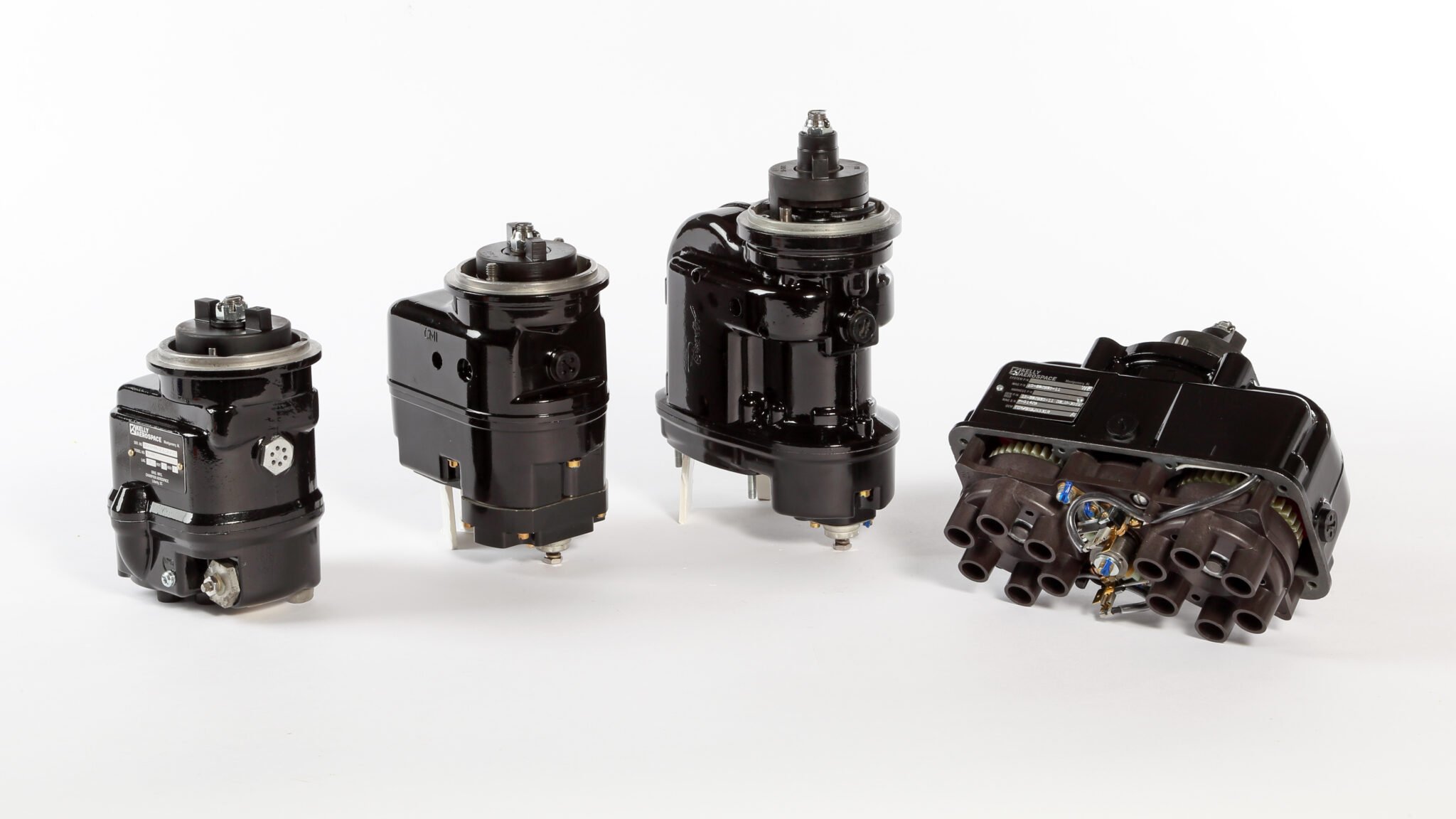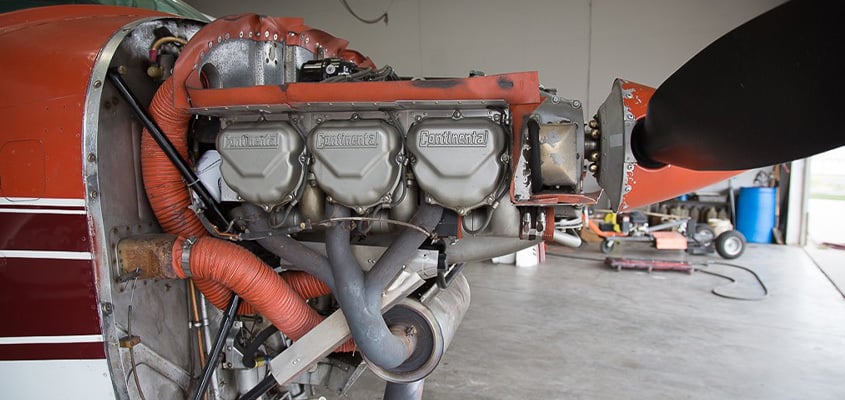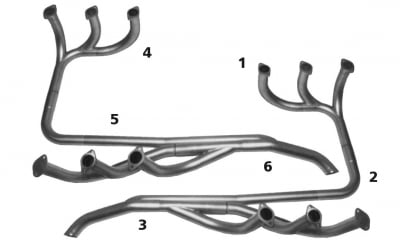Why are Magnetos Used in Aircraft
Today’s world is dominated by modern, high-tech smart electronics that can be found in every device imaginable from toothbrushes to spacecraft operating billions of miles away from Earth. General Aviation airplanes are equipped with the latest glass panel, GPS driven avionics that have more computing capability than any manned space vehicle that was sent to the moon. Aviation has historically been on the cutting edge of the newest and best technology found in the cockpit, so the expectation is that there should be an equally new technology applied to the aircraft engine and its systems. But, cutting-edge engine technology has been stubbornly slow to change piston aircraft engines.

In particular, why is it that mechanical magnetos- which have been in use on reciprocating engines for over 125 years- are still being used as the primary ignition systems for piston-engine aircraft? With all of the modern technology at our fingertips, why isn’t there something better?
Auto engines have not used contact points for a few generations. Likely, the parents of the high school students learning to drive today never drove or owned a car with an engine using a mechanical ignition system. Mention Magneto to these generations and the only reference they will have is a Marvel comic book character. Yet, magnetos remain the most prevalent ignition system used for aircraft engines. If asked, most aviation enthusiasts believe that aircraft engines use magnetos because that is the only ignition system approved by FAA Regulations. It is true that the Civil Aeronautics Authority, the predecessor to the FAA, defined the standards for piston-engine aircraft ignition systems nearly 85 years ago. The wording in the current regulations has remained virtually unchanged since then, and reads as follows: CFR 14, 33.37, PART 33—AIRWORTHINESS STANDARDS: AIRCRAFT ENGINES 33.37 Ignition System
Each spark-ignition engine must have a dual ignition system with at least two spark plugs for each cylinder and two separate electric circuits with separate sources of electrical energy, or have an ignition system of equivalent in-flight reliability.
Interesting….where are the words that say, specifically, magnetos must be used on piston-engine aircraft engines? The truth is there is no specific guidelines set forth by the FAA that piston engines must use magnetos as the primary ignition source for piston engines.
So, why are magnetos used as the most prevalent ignition system used on aircraft piston engines when more modern technology for ignition is available?
BLAME IT ON WRIGHTS- AND CHARLES TAYLOR
The discussion of aircraft magnetos needs to begin with some sort of historical context as to how magnetos were first designed onto aircraft engines. As with virtually all the basics of flight, magnetos can be directly traced back to the engine used in the very first Wright Flyer of 1903. Everyone knows that the Wright Brothers built and flew the first successful powered airplane. But, very few people know that the Wrights also built the very first piston engine specifically designed for airplanes. The engine used by the Wrights was one of the most important, but overlooked elements that made their airplane successful.
The Wrights were not the first to fly or developing sophisticated aircraft designs. George Cayley, Otto Lilienthal, Octave Chanute had flown manned gliders many years ahead of the Wrights and had proven the concept of heavier than air flight. Samuel Langley made successful flights with an unmanned airplane powered by a steam engine. Langley unsuccessfully launched a steam engine-powered, man-carrying airplane in October 1903, 3 months prior to the Wright’s historic flight. The important point is, that numerous inventors had developed flight-capable airframes at the time that the Wrights were experimenting with flight. However, the airframes lacked a suitable powerplant of the right power and weight that could propel the airplane in powered flight. The engine used by the Wrights solved the propulsion problem and directly contributed to their accomplishment of demonstrating the controllable, powered flight of a heavier-than-air machine. The Wrights were assisted in their aircraft engine development work by their in-house master bicycle mechanic, Charlie Taylor. Keep in mind that gasoline-fueled piston engines were an emerging science of the time, and not common at all. The vast majority of people living at the time had never seen nor heard a piston engine and very likely had no knowledge of how a piston engine worked. In 1903, when the Wrights completed their first powered flight, Henry Ford was still 5 years away from producing the very first Model T car, so gasoline-powered engines used in vehicles were a rarity.
Incredibly, with no formal engineering background, using only the skills he had learned as a toolmaker and bicycle repair mechanic, Charlie Taylor built the first successful airplane engine in only six weeks! He did follow established engineering concepts for piston engines of the time and used design elements from existing, successful engines. For the ignition system, he used what all other engine manufacturers were using- a magneto! What inspired Charles Taylor to use a magneto? Was there a better solution to be found in the automotive world? In a word- No. In 1903, the magneto was state of the art for ignition systems, was the very best solution for a lightweight, simple, self-contained generator of electrical energy. The magneto did not require any external sources of power to make it generate spark energy. The engine flywheel turned a magnetic rotor shaft in the magneto, and an electrical charge was generated. That energy fired the spark plug to ignite engine combustion which made the engine run to turn the propellers. The only other option available to Taylor was a battery ignition system that supplied power to an external coil and contact point mechanism to distribute the spark. The dilemma for Taylor was that batteries and generators of the time were extremely heavy, with all-up weight in the many hundreds of pounds. The size of the batteries also would have required considerable physical space, extra structure- and resulting weight- to support the batteries in the Flyer. The magneto solution used by Taylor was an engineering marvel. The average magneto weight was 20-25lbs. and made a spark any time that the engine was running. The empty weight of the Wright Flyer was just over 600 lbs., meaning the magneto system was just under 5% of the total weight of the airplane. A battery ignition system probably would have added 30% more weight to the Wright Flyer, which would have clearly prevented it from flying. Is it a stretch to suggest that the Wrights were successful as the first to fly a controllable airplane due to
the magneto? While that is an interesting idea, it is safe to say that the magneto certainly contributed
to the overall success of the Wright Flyer and the Taylor engine.
THE GOVERNMENT REQUIRES DUAL IGNITION
The current day Federal Aviation Administration, or FAA, can find trace its roots through a number of
government agencies that were focused on defining the regulations for aviation safety. The Civil
Aeronautics Authority of the 1930s put into effect more stringent regulations to improve the safety of
aircraft and engines. The early Civil Aviation Regulations became the later Federal Aviation Regulations
and established the basis for rulemaking and safety standards for aircraft and engine design.
Through the 1920s and early 1930s, the aircraft engine continued to rely upon single magnetos as the
primary ignition system. As the CAR’s developed to improve upon aircraft engine design and safety, the
Regulations for a dual, independent ignition system made the spark generating magnetos a perfect
solution to comply with this government requirement. Dual ignition systems became the standard
design, and for good reason. If one ignition system malfunctioned, then the remaining ignition could
keep the engine running so that the flight could continue and be landed normally, under complete
control.

The magneto also made sense as it was uncommon for aircraft of the time to be fitted with electrical
systems or starters. Aircraft electrical systems did not develop as quickly as they did for cars, primarily
due to weight, complexity, and expense. Batteries, starters, and alternators were still very heavy and
not particularly reliable. The added weight of an aircraft electrical system could easily add 200 lbs. to
the aircraft weight or about the weight of a passenger and personal baggage.
For the most part, pilots of the time did not care that there were no electrical systems on
airplanes. With no electric starters, aircraft engines used the “Armstrong Method” to get engines
started: The propeller was swung by a person using their arms, the mags were switched to on, and the
engine started. No worry about dead batteries, no worry about the cost of maintaining starters and
electrical systems, no worry about getting stranded due to a failed electrical system. If the pilot could
swing the propeller, the magneto sparked, and the engine would run. Magnetos provided the perfect
solution to provide simplified system installation, good starting characteristics, and low cost of
operation.

IT IS ALL ABOUT THE TIMING
In the early 30s, aircraft ignitions and automotive ignitions took different paths in terms of
development. Automakers favored battery-driven contact point/coil/distributor systems and aircraft
engines remained steadfast with the magneto. There are numerous technical reasons why each system
worked better in some way for either the automotive or aircraft application.
First, the mission profile of automotive engines and airplane engines became distinctly different. Auto
engines are subject to a frequent change of RPM to speed up and slow down, sometimes driving in stop-and-go traffic, sometimes driving fast for long distances. Because of this, auto engine ignition systems and timing to the engine were biased to improve starting, idle, and low to mid RPM acceleration.
Magnetos are limited to “fixed” advance ignition timing for all operations other than starting the engine.
The fixed advanced timing works for airplane engines because full power is required at takeoff, and
engine RPM does not vary for all inflight operations after takeoff and landing. The requirement for the
aircraft engine to make full power is critical to flying safety. Airplanes must carry their certified load at
takeoff. Not only that, but they must takeoff within a specific length of the runway and climb at a rate
sufficient to clear obstacles or terrain within the vicinity of the airport.
Auto engines rarely need to run at full power for extended periods, and rarely run at greater than 30%
to 40% power most of the time. Car drivers never worry about having enough power to clear a hill or
the power required to drive with light or heavy loads. Full engine power is rarely if ever, required for a
typical passenger car. Because auto engine RPM varies when driving and the engine accelerates or
decelerates randomly, the fixed timing of the magneto does not provide the best overall performance.
Magnetos were not optimum and automakers devised distributors with “variable advance” mechanisms
that changed timing based on the centrifugal force applied to the advance mechanism as the engine
RPM changed.

The advanced mechanisms had the potential for failure modes which could affect ignition reliability,
though. The advance mechanism itself adds many extra components to the system, all of which are
subject to maintenance, or in the worst case, failure. Auto ignitions were designed to default to an
engine timing point not at full power, but to low power, idle timing position. The automotive failsafe
provided for “limp home” capability, but at the cost of reduced power.
The default timing for the aircraft engine magneto is the maximum power timing point, which provides
for the safest situation should the engine be required to continue running after one of the ignition
systems fails in flight. The lack of the advanced mechanism is a benefit in terms of maintenance and
overall cost due to lower parts count.
The picture comes into focus that aircraft engines and automotive engines have distinctly different
“mission profiles” relative to how the engine develops power relative to ignition timing.
- Automotive engines timing is designed to provide the best starting spark and optimize spark at
less than full power engine loads by varying engine timing - The limp home default in the event of a component malfunction is for reduced engine
power - Aircraft engines timing is optimized to perform best at full power engine loads by keeping ignition system timing at a fixed point with no variability
- The limp home default is normal operation provided by the remaining ignition system should one system fail
MAGNETOS ARE THE CHOICE
The FAA’s single-minded goal for safety does not necessarily inhibit innovation, but it can encourage
aircraft engine manufacturers to follow conservative, simple design paths of engineering. However, is a
conservative path, wrong, or just as pragmatic as a mindset of “not re-inventing the wheel?”
There have been at least a half dozen electronic ignitions specifically designed to replace magnetos
introduced into the aviation market since 1986. But, none of these ignitions have shown the potential to
be the “perfect” replacement for magnetos. Incredibly, many of the electronic ignitions sold today
require that a magneto be retained as part of the system for failsafe backup. When the electronic
ignition fails, the old technology, tried and true magneto will save the day so that the aircraft engine
continues to run safely
In the final analysis, electronic ignitions are challenged to match the simplicity of installation and repair
support that exists for magnetos. By design, electronic ignitions are more complicated installations with
numerous components and wiring connections that all have to be not only installed correctly but
maintained correctly. Troubleshooting of electronic ignitions requires the ability to think in more
abstract terms of electronics and component interactions. Magnetos are mechanical, and maintenance and
troubleshooting do not require any extraordinary troubleshooting skills. The vast majority of aircraft
mechanics in the world know how to install, maintain and repair magnetos. Out of the hundreds of
thousands of aircraft mechanics in the world, only a few hundred may have experience with installing
maintaining, and servicing aircraft electronic ignitions.
Parts and service support for magnetos are unparalleled. Magnetos, parts, and companies that can
service magnetos can be found worldwide. Anywhere in the world where a piston engine airplane can
take off or land, there are magnetos parts or support available within a one-day shipping time. In most
cases, maintenance shops based at airports with higher levels of airplane activity will have parts in stock
and mechanics available immediately to provide service for the magneto. Due to the very low
population of electronic ignitions, virtually no repair parts are easily found in the worldwide market.
Parts are stocked at a handful of locations, or available as a special order from the manufacturer. In some
cases, electronic ignitions sold and installed at some point in the past are simply no longer supported by
the manufacturer. The recommendation from the manufacturer is to replace that electronic ignition
with magnetos should it need service!
So why is it that mechanical magnetos- which have been in use on reciprocating engines for over 125
years- are still being used as the primary ignition systems for piston-engine aircraft? When all of the
advantages and disadvantages are summed up, the very reason that Charlie Taylor selected the
magneto for the first piston aircraft engine remains as true today as it was 125 years ago: The magneto is
a self-contained generator of electricity and ultimately the least complicated, most common sense
the choice for reliability and performance for aircraft engines.


